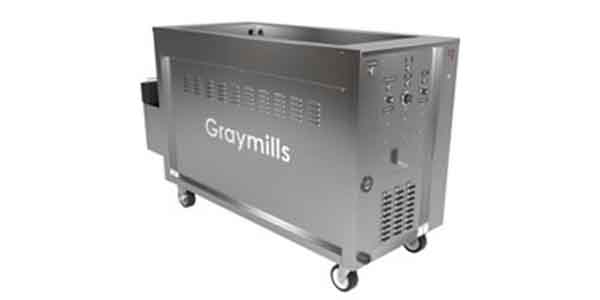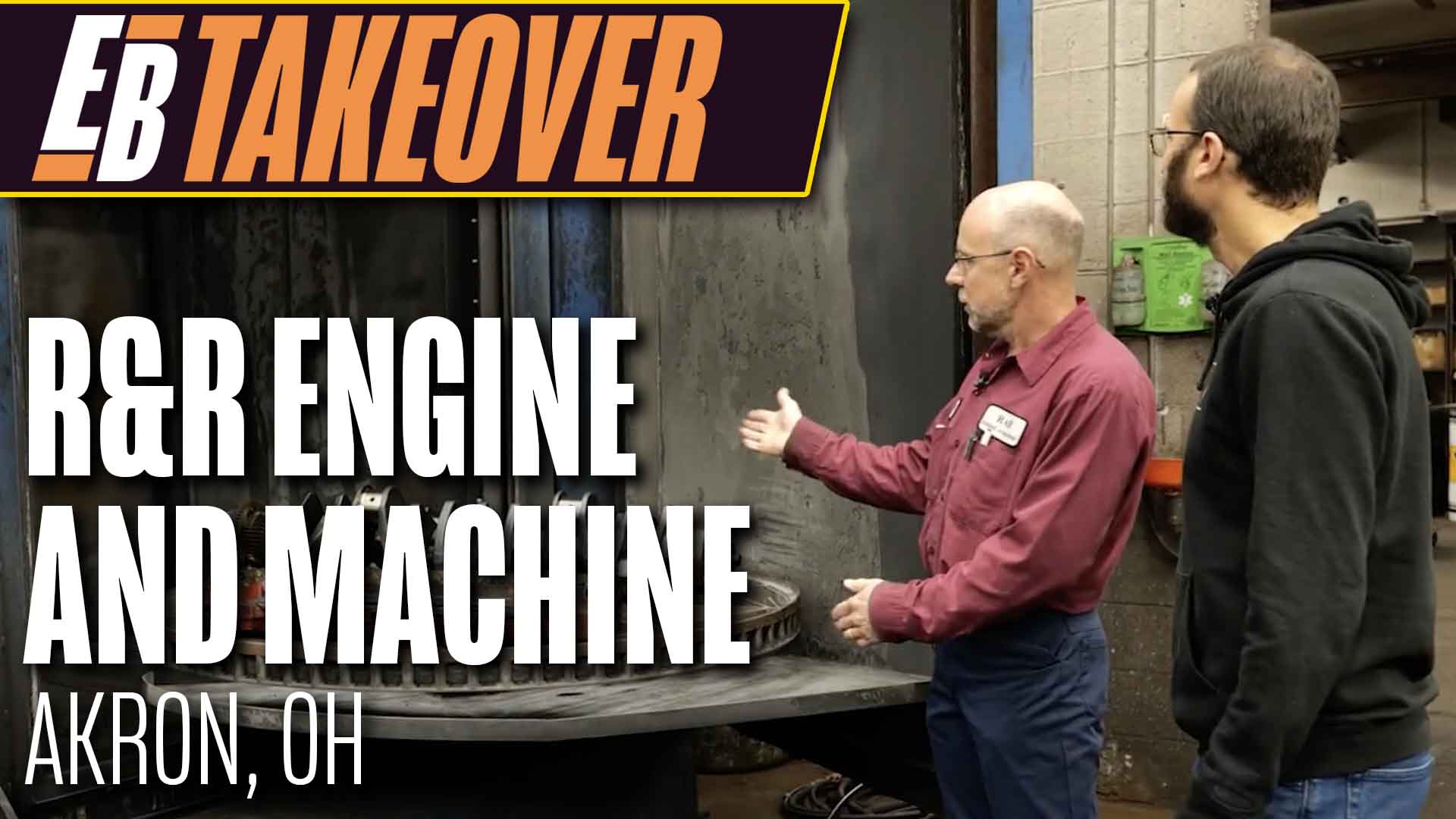Sodium bicarbonate blasting or soda blasting, is a user-friendly process for the removal of grease, oil, burnt carbon and many other contaminates experienced in engine building. There are many different processes for cleaning parts and components before engines can be rebuilt, and engine builders use a variety of cleaning solutions for different reasons. However, the argument can be made that sodium bicarbonate blasting or soda blasting has numerous advantages.
Just ask Jeff Winn, owner of Texas Engine Machine, Inc. in Llano, TX. Jeff’s shop offers a broad array of engine machining services for automotive, diesel, marine, and motorcycle applications. Due to the extensive array of parts Texas Engine Machine gets its hands on, the shop prioritizes the cleaning process.
“We’re not just a machine shop, we’re a cleaning business,” Winn says. “We clean stuff for a living. There’s just no way around it. Half of our business is cleaning – cleaning before we machine and cleaning after we machine. It is half of our labor time and we realized our methods can be very inefficient, so we had to invest in better cleaning methods.
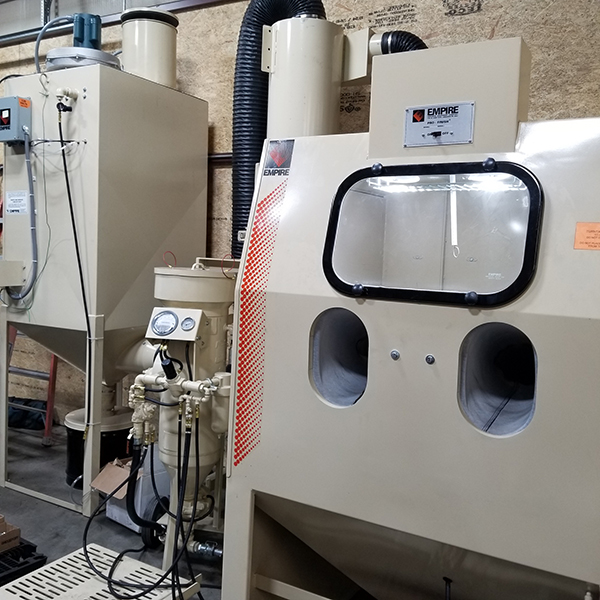
“It’s nice to spend money on fancy machines like seat and guide machines and hones and big machining equipment, but I neglected the cleaning side of the business. I needed to really focus on the cleaning side of things and improve our game there if we were going to continue to grow and be profitable.”
Texas Engine Machine had an aluminum-safe spray cabinet, a three-piece bake and blast system that uses steel shot and a caustic dip tank. The shop also used brushes on die grinders to remove carbon from components.
Despite having a number of cleaning methods on hand, Jeff knew something was missing from the equation. The process wasn’t as efficient as he knew it could be.
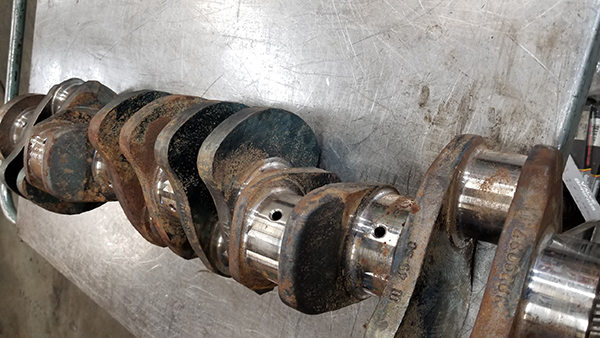
“We try to avoid bake and blast for aluminum components because it’s not a great solution for cleaning aluminum,” he says. “Cleaning aluminum just came down to an aluminum-safe spray cabinet to get the bulk of the gunk, grease and stains off, and using brushes to clean the carbon out of the chambers and the ports. However, its time consuming, noisy, it dirties up the shop, and ultimately, the results aren’t the greatest. You can only get it so clean that way.
“I thought about ultrasonic equipment, but I didn’t feel ultrasonic was going to do the type of cleaning I needed to do. I need to be able to remove rust, paint and carbon. I thought about wet soda blasting, wet ceramic blasting and dry blasting. I tested a wet ceramic media blaster and it was kind of slow cleaning, and after the head dried, I had ceramic media pouring out of the water jacket for a couple of weeks. Every time I picked up that head, more ceramic media would fall out of it. After that experience, it became pretty obvious to me I couldn’t do something like that for an engine for fear of leaving media behind and have it fall into the engine during assembly or being in a port or somewhere hidden.
“I transitioned to thinking about strictly soda due to the fact it can dissolve. And even if it didn’t dissolve, it’s not going to destroy your engine if there’s a little speck of baking soda in there somewhere.”
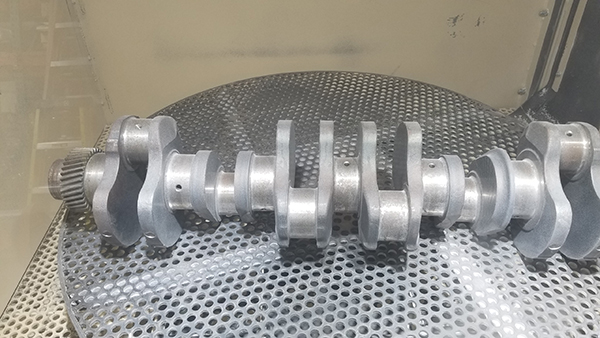
With his focus narrowed, Jeff did his due diligence on soda blasting media and equipment.
“Soda will remove the paint, it’ll remove the carbon and it will remove a good bit of the rust,” Winn says. “It might not be perfect, but it’s going to get rid of the bulk of it and get it down to something that’s cosmetically acceptable.”
One popular soda blast media is ARMEX. It is pure sodium bicarbonate, which unlike cleaning solvents, means it is non-hazardous, non-toxic, biodegradable and is neither caustic nor corrosive. Furthermore, what can take hours to clean with chemicals takes mere minutes to clean with soda.
When comparing baking soda to other types of abrasive medias there are many advantages. As a blast media, baking soda will not produce thermal sparks, so it can be safely used in areas sensitive to sparking. Moreover, baking soda creates less waste than other abrasive medias – less than 20 percent of the waste volume associated with sand blasting for the same level of work – which makes for easier residue disposal.
Baking soda’s water solubility gives it further sustainability advantages. Unlike abrasives such as crushed glass that bond with contaminants to be removed, soda allows for separation from the contaminant in a water solution. By dissolving spent soda and filtering out the contaminants, the liquid solution can typically be discharged to open waterways or sewage treatment systems.
From the user’s standpoint, baking soda enjoys several advantages relative to competing hard blasting materials. While baking soda dust can be a mild irritant if breathed into the lungs or if it gets in one’s eyes, it carries none of the risks related to human contact that chemicals and many harder abrasive medias do.
When you’re cleaning surfaces that cannot be damaged, the only blasting abrasive to use is baking soda. The gentle physical propriety of baking soda, yet aggressive cleaning ability, is what makes it a great choice. Other hard blasting abrasives can remove surface material, which can cause permanent damage and even change the tolerances and specification of the part being cleaned, especially when the operator performing the blasting is not experienced.
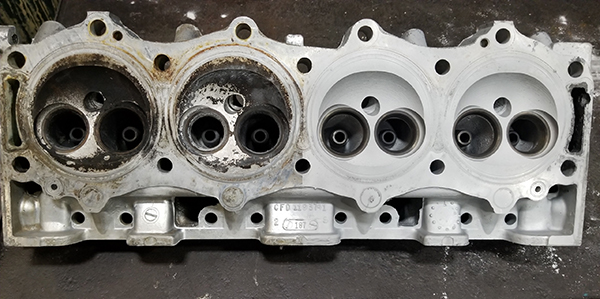
Whether the job is removing heavy grease and oils or old paint and gasket materials, baking soda blasting offers a user-friendly, environmentally safe, gentle and effective way to clean a variety of substrates including steel, lead, aluminum, alloys, plastics, rubbers and composite materials.
With his mind made up on soda blasting, Winn purchased a big 48×48-inch Empire cabinet for his shop since Texas Engine Machine cleans a lot of big diesel parts as well as smaller automotive and motorcycle parts.
“We’re using this on anything and everything,” Winn says. “I use soda blasting as a secondary cleaning operation. Most things will be washed in a spray cabinet first to remove the oils and the loose contaminates before being soda blasted.
“I got rid of my caustic dip tank when I bought that big spray cabinet. I’ve invested a lot between the big spray cabinet, the soda system and the air compressor system, so I’m going to advertise soda blasting as a service. This will let us diversify a little bit.”
While soda blasting is not a panacea, it can and should be an essential tool in your parts cleaning arsenal.










